Buffalo Bill Cody, his little sister Helen, and Duluth
There are a lot of rumors and facts about Buffalo Bill Cody and his connection to Duluth. In this post, we examine the subject as deeply as anyone would possibly want to.
In short: Buffalo Bill Cody financed the Duluth Press Building in the friendly West End. There used to be a Cody Hotel in West Duluth named after Buffalo Bill, and he is the namesake behind Cody Street.
Here’s a link to a story I wrote in 2002 about Buffalo Bill’s little sister for the Area Woman magazine, which provides a good general background: Area Women in History: Helen Cody Wetmore
And here are more details I couldn’t fit into the magazine article:
- Helen was born Laura Ella Cody. “Helen” and “Nellie” were her nicknames.
- Her first husband was Alexander Jester, a wealthy older man. They met and married in 1871; by 1877 Jester had lost his fortune and died.
- After Helen married Hugh Wetmore they lived at 1825 W. First St., but they are believed to have moved into the Duluth Press Building in 1894.
At left is a modern photo of the Duluth Press Building. The sketch of the building at right is from the Jan. 27, 1894 issue of the Duluth Press. Note the smudged-out spots at the top and bottom of the building sketch; the original sketch had the words “People’s Press” in both places, as it was drawn before the name change.
- Helen’s daughter from her previous marriage, Mary Jester, was the Duluth Press‘ city editor.
- Referring to the Cody Sanatorium in a Duluth Press editorial, Helen wrote this about the view: “On the left is the open lake, nearer the beautiful point, which makes for Duluth one of the finest harbors in the world. Then comes the harbor in St. Louis Bay, with its constant panorama of ships of every kind, moving in and out, and its numerous docks with their interesting contents. Then, to the right, the beautiful St. Louis River, winding in and out among the islands, a never ending source of beauty and grace. The sky expanse is wonderful in its grandeur, and the scene at night is one never to be forgotten; the twinkling lights of five or six towns near and far being in full view.”
- In June of 1896, the Cody Sanatorium was turned into a “summer hotel and pleasure resort.” On Nov. 17, 1896, at 6 p.m., the sanatorium/resort burned to the ground. The fire was caused by a defective flue and spread rapidly. Police saved some of the building’s furniture by sending a rig with ladders and an extinguisher. There was no water supply on the hill to put out the fire. An article in the following day’s Duluth Evening Herald noted “the building was of frame, and a large structure and it made a great illumination while burning.” The sanatorium’s brick chimneys were the only things left standing after the fire.
- After the fire Helen began work on her biography of Buffalo Bill, with help from Bert Leston Taylor. The book was compiled from Helen’s accounts of growing up with Buffalo Bill, which had been published in the Duluth Press, and the work of Col. Prentiss Ingraham, who had written in the Duluth Press about Buffalo Bill, based in part on stories told him by Helen.
- Between the fire and construction of her “Codyview” home, Helen is listed in Duluth’s city directory as living at 5 S. 12th Ave. E.
- Codyview was built in 1898. It had a marble fireplace and was said to have had the first bathtub in the city of Duluth.
- Helen and Hugh Wetmore were summoned to court in 1897 because of liens brought against them to pay for labor and materials to build Codyview. Buffalo Bill paid the liens and became the new owner, allowing Helen and Hugh to live there rent free.
- In 1899, Helen traveled with the Wild West Show to promote her book, handing out copies to ticketholders at the door of the tent.
- Hugh Wetmore died in 1900. (Note: This assertion is presently in dispute. See the post “Death of Hugh A. Wetmore.”
- In June of 1901, Helen’s daughter Mary Jester married Duluth newspaperman Robert Allen at Codyview. The couple left Duluth in 1902. (They had a daughter around that time, Helen Cody Allen.)
- In 1905, Helen left Duluth for Cody, Wyo., a town named after her brother. There, she managed the Cody Enterprise newspaper, which Buffalo Bill eventually gave to her. After a reunion with the three other surviving Cody children, Helen is believed to have traveled some, ultimately stopping in Pasadena, Calif., where her daughter and son-in-law lived. There, in 1911, she suffered a cerebral hemorrhage. Buffalo Bill rushed in from Arizona to visit her just before she died.
- In 1913, Buffalo Bill sold the Codyview house and land to Alice Hain. The next owners were William Hain (1922), John Watsick (1922-’24), Marie Watsick (1924-’28), John Watsick (1928), Herbert Pratt (1928-’36), Marion Edith Graham (1936-’40), David Anderson (1940-’44) Howard and Mary Lou McDonald (1944-’52), Carl E. Sjodin (1952-’91) and Elsie Sjodin.
- The fantastic view of West Duluth and the St. Louis River that so fascinated Helen Cody is no more. “Now we don’t have any view,” Elsie Sjodin said in 2002. “Trees have grown up. There’s not much left, unless you go upstairs. Then you can see some of it.”
- A plaque presented to Carl Sjodin by the Superior Telegram many years ago hangs above the fireplace at Codyview. It reads “Buffalo Bill Cody slept here in 1893.” It should be noted that, though Buffalo Bill did indeed sleep at Codyview during visits to Duluth, it wasn’t until 1894 that he first came to Duluth, and Codyview wasn’t built until 1898.
- The stained-glass-windowed doors from Codyview are being used today as decorative pieces at the East Duluth home of William Patrick. Patrick bought the artifacts many years ago. “I had a friend whose father was in the storage business,” he said. “[The doors] were up in the attic of his store all covered with pigeon dung and in pretty bad shape.”
- It is a matter of some historical confusion why all records indicate Codyview was built in 1898, but the stained glass windows in the double oak doors read “Codyview” and “Established 1895.” Since the Cody Sanatorium was built in 1895, the windows were probably labeled such to indicate Cody ownership of the land starting in 1895. It is unlikely that the doors were part of the original sanatorium and survived the fire.
- Buffalo Bill first visited Duluth in 1894. He arrived at the Union Depot on Jan. 22, on the 3 p.m. train, and was greeted by a crowd of citizens. He went first to the Spalding Hotel to meet his friend Finley H. Frisbie, the hotel’s manager. Then he was taken by carriage to the new Duluth Press Building in the West End. The following evening, a reception was held on the second floor (or “bank floor”) of the Duluth Press Building. Of the 1,900 people invited, about 1,500 attended. Among those present were Capt. Ray T. Lewis (who had just received the Republican nomination for mayor, and later that year was elected) and former mayor Marcus J. Davis. The Duluth Press reported that the street in front of its building was “lined four deep with carriages.”
- Upon leaving Duluth after his six-day visit, Cody said, “I am both pleased and surprised with what I have seen during my short stay here, and I leave Duluth with a firmer faith in her future greatness than I ever had before. You have a beautiful city and the prospects of a glorious future.”
- Cody Street in West Duluth was named after Buffalo Bill on Feb. 12, 1894.
- Buffalo Bill made a second trip to Duluth on Jan. 1, 1896. It was a short business trip, lasting only one day. He arrived early on New Year’s Day, visited the newspaper office, then spent the night at the Cody Sanatorium and left town the next day.
- Buffalo Bill’s Wild West Show first came to Duluth on Sept. 12, 1896, and was in Ashland the day before. Bill wrote a letter to his sister Helen, offering to make a wager that a show a few days later in his small town of North Platte, Neb. (population 3,500) would draw a bigger crowd than the show in his sister’s home, Duluth (population 65,000). “I could not accept any such inferred slur upon the Zenith City,” Helen wrote in her book Last of the Great Scouts. She accepted the wager, “a silk hat against a fur cloak.” The Duluth show, at 28th Ave. W. & Superior St., brought out thousands, and it looked like Buffalo Bill would lose his bet. What neither Buffalo Bill, nor his sister, knew was that managers of the Union Pacific were running excursion trains to North Platte from every town and hamlet. Over 10,000 people attended that show.
- Mary Elizabeth Bogart, a cousin of Buffalo Bill, died in 1933. Bill’s third cousin, Walter Bogart, also lived in Duluth in the 1960s.
- The Cody Hotel was at 332 N. Central Ave. There was also a Cody Drug Store there. Although the Duluth News Tribune has erroneously reported on more than one occasion that the hotel was financed by Bill Cody, that is simply not true. It was built in 1888 by J. W. Phillips and originally named the Phillips Hotel. In 1910 the new owner, Daniel Fitzgerald, renamed it the Cody Hotel in honor of Buffalo Bill. It was demolished in 1973, when owner John Dandrea opted to use it as a parking lot for his Gopher Restaurant and Lounge. Forty years later, it remains a parking lot for the Gopher. Below are some photos.
May 14, 1914, McKenzie Photo Studio
Circa 1920s, Northeast Minnesota Historical Society
Possibly shot after the Feb. 23, 1922 snowstorm, Northeast Minnesota Historical Society
1971 Roger Nesje photo
April 25, 1971 Roger Nesje photo
Undated Roger Nesje photo
Modern photo of the Gopher Lounge parking lot, former site of the Cody Hotel.
Newspaper ad for Buffalo Bill’s Wild West Show in Duluth.
Recommended Links:
Leave a Comment
Only registered members can post a comment , Login / Register Here


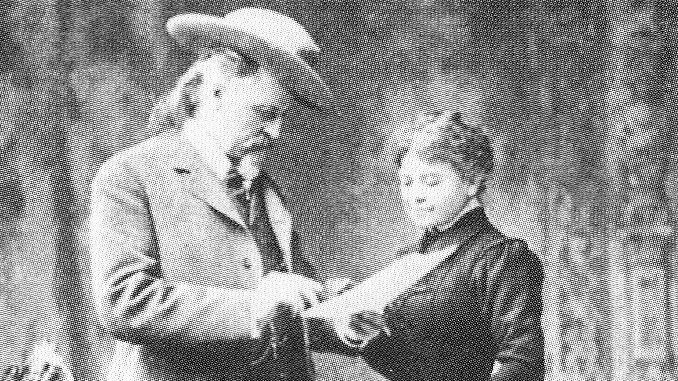
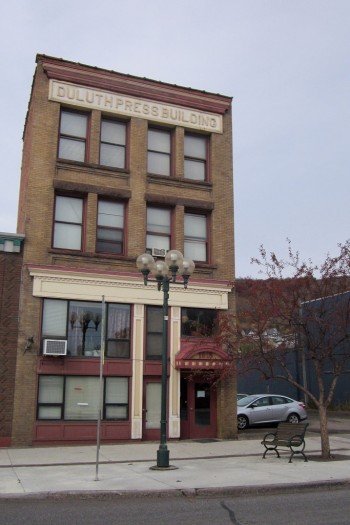
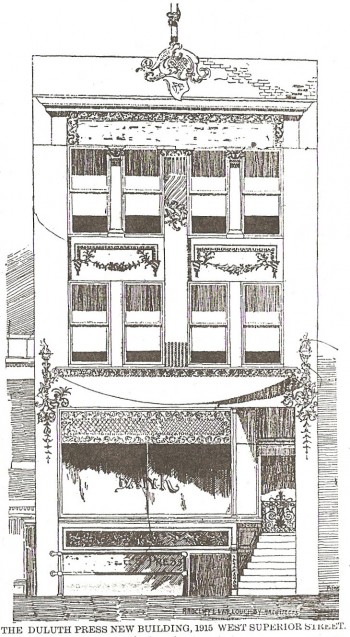
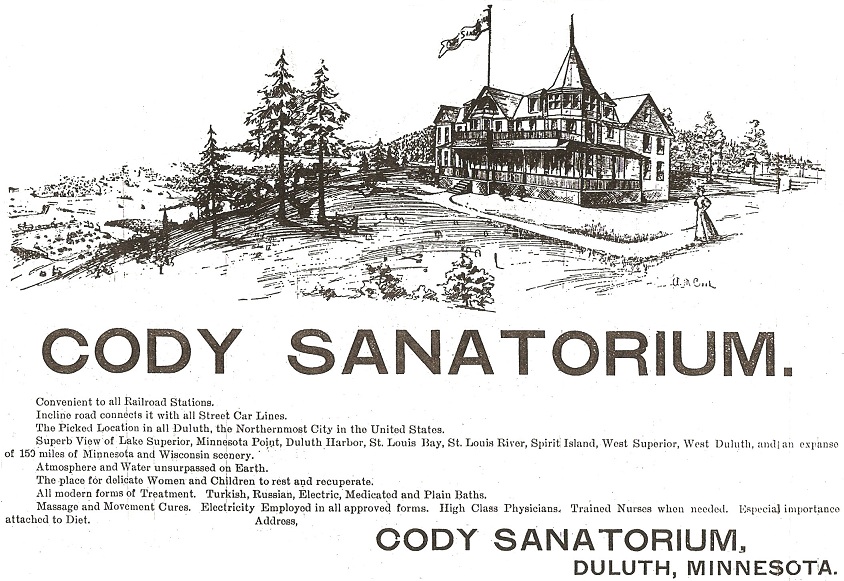
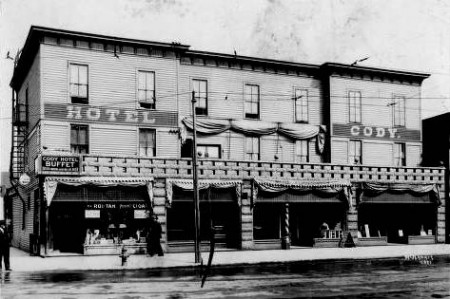
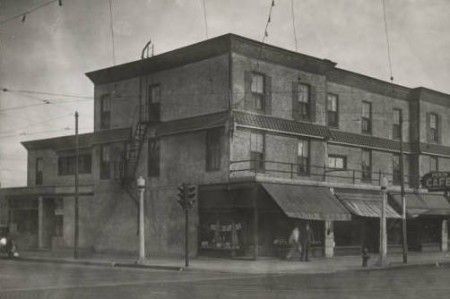
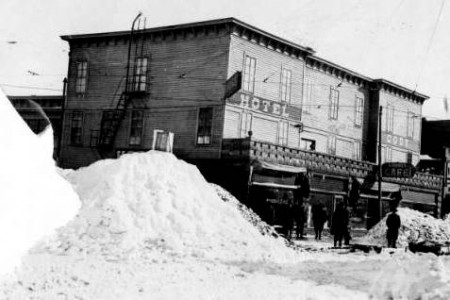
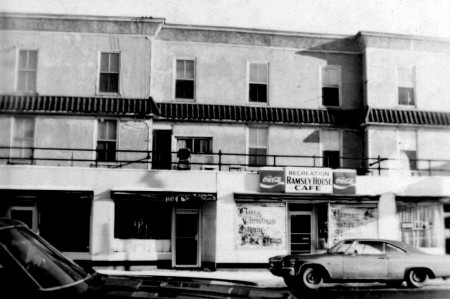
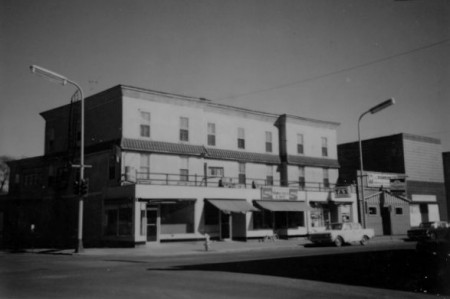
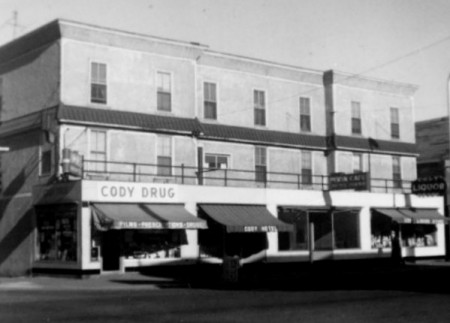
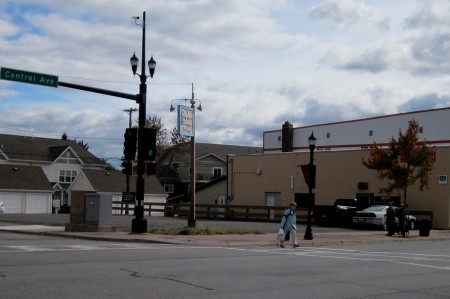

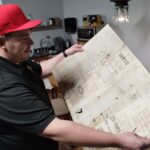
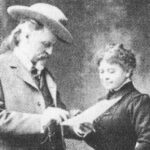
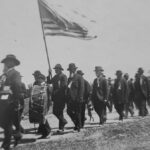
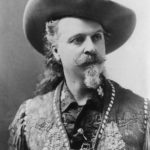







8 Comments
hbh1
about 13 years agohbh1
about 13 years agoPaul Lundgren
about 13 years agohbh1
about 13 years agoDorkus
about 13 years agoTony D.
about 13 years agoPaul Lundgren
about 12 years agoPaul Lundgren
about 10 years ago